Our survey asked members of the public to submit records of Yellow Cellar Slug and Green Cellar Slug in UK gardens
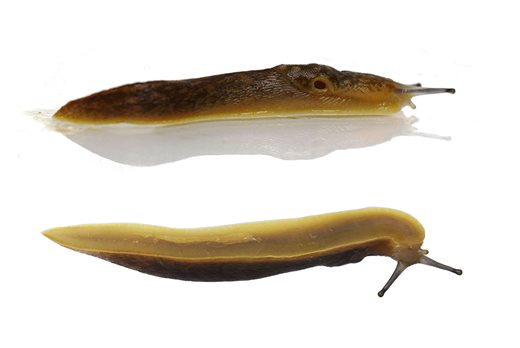
What are Cellar Slugs?
The Yellow Cellar Slug (Limacus flavus) was first recorded in the UK in 1685. In the 1970s a second similar looking species was recognised, first in Ireland then spreading quickly throughout the UK, the Green Cellar Slug (Limacus maculatus). Since then, records of the Yellow Slug have declined sharply.
Has the Green Cellar Slug taken over? Are we about to witness the extinction of a slug in Britain? We asked for your help to find out!
We invite the public to look for these species, and help us identify what garden features may influence where these slugs are residing.
Both these slug species are known to be detritivores, feeding on decaying plant material in gardens. They are not considered plant pests as they do not feed on live plant material.
As of 1 November 2021, we have stopped accepting data for our analysis. However, you can still submit records via the survey form. These records will no longer feed into RHS research directly, but will add to the national data set held by the Conchological Society of Great Britain and Ireland.
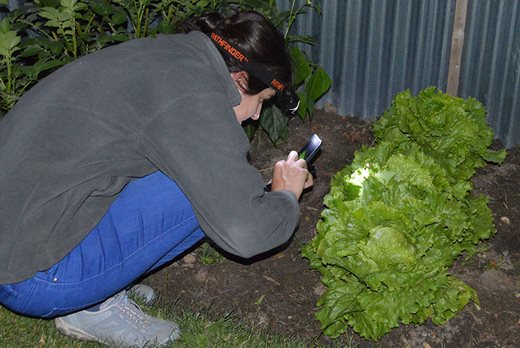 Doing a slug hunt
Doing a slug hunt
- Grab a torch and go on a slug hunt in your garden after dark to see if you can find this nocturnal species
- Take photographs showing the top view of each slug (you may want to move the slugs somewhere light to do this)
- Match your slug to the ID guide to see what species you have
- Go to the Cellar Slug recording form on iRecord, enter your survey data and upload your photo(s). You don’t have to register with the iRecord website to submit a record, but you may wish to so expert verifiers can contact you if they have questions about your record.
Identifying the slugs
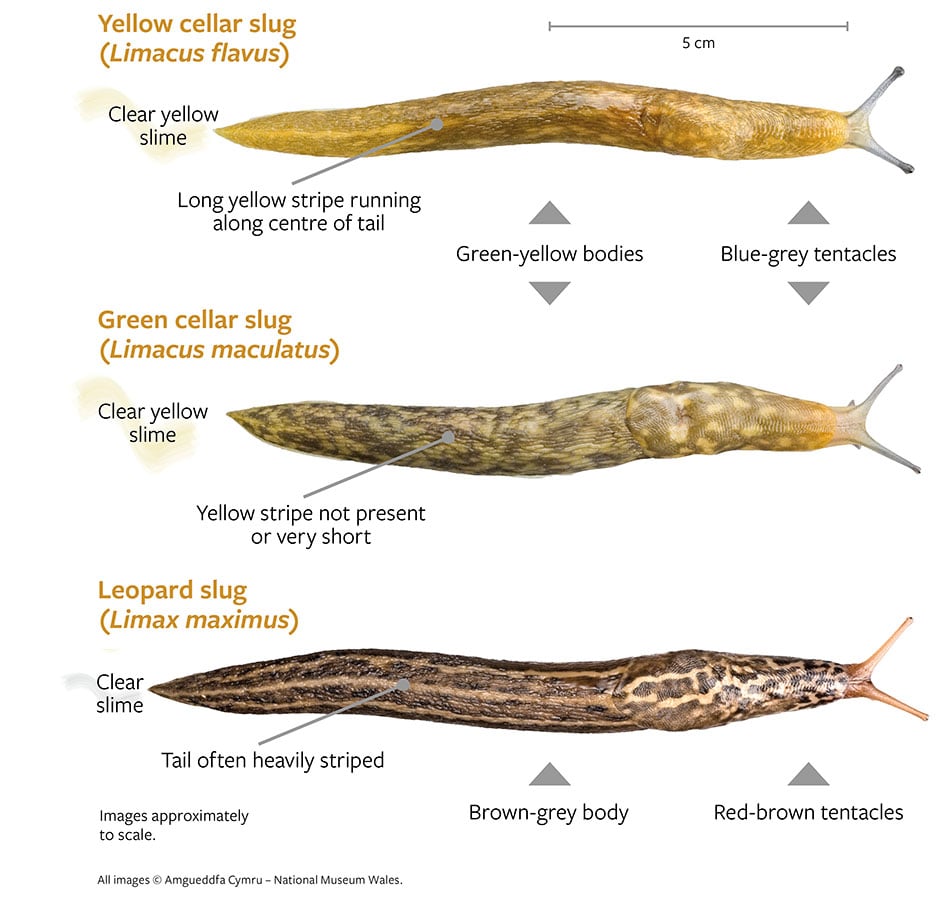
The Leopard Slug (Limax maximus) has been included in the ID guide as it is strikingly similar in size, appearance and nocturnal behaviour. We also welcome records of this slug through the survey form, though it is not the target of our research.
Download the slug ID guide
Example of a useful photograph:
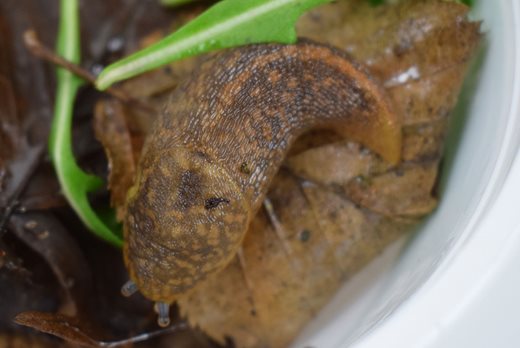
Yellow Cellar Slug (Limacus flavus): Tentacle colour visible, long unbroken yellow stripe on centre of tail visible
Describing your garden
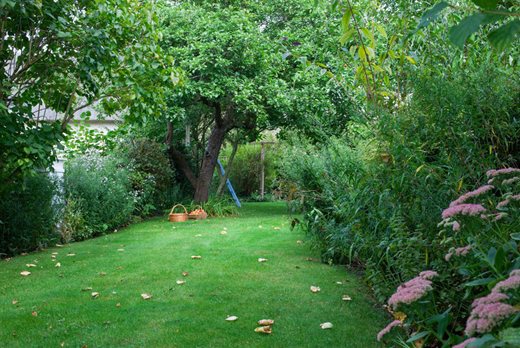 We need to know a little about your garden including the location.
We need to know a little about your garden including the location.
Location
Give the location, as precisely as you can for example a 6-figure grid reference. You can do this simply on the iRecord form by zooming in and out on the interactive map.
What about my garden features?
While the survey was active, we also asked about the size of the garden, what type of features are in it, and any steps taken currently or previously to try to manage slugs and snails in your garden, for example, slug pellets, nematode treatments, beer traps, barrier materials. These details were specific to our research interest at the time, so you will no longer be asked to provide these. With the information provided so far we hope to discover if any particular garden features are linked with the places where these species are found. This includes things like garden size, soil type and altitude.
The Yellow Cellar Slug is thought to be strongly associated with buildings, so we also asked how far the slugs were from the nearest inhabited building (in m or ft) when found.
Submitting your record
Submit your findings via the wildlife observation website iRecord – operated by the Biological Records Centre.
You do not have to sign up to the website to submit your data, but doing so will allow expert identifiers to provide you with feedback on your records.
Your personal information will be used in accordance with the iRecord privacy policy and our own privacy policy. Email addresses will only be used to contact you if we have questions about your record. Please note that any data submitted after 1 November 2021 will not be directly shared with the RHS or stored on RHS servers.
If you have any concerns or questions about participating in this survey please contact [email protected]
FAQ:
When should I look for these slugs?
Both cellar slug species are highly nocturnal, which is why we ask you to look for them after dark when the slugs are active. You can also find these sociable species resting underneath logs, paving, in drains and under other objects during the day. Here they form characteristic ‘huddles’ thought to help conserve moisture. You may find both cellar slug species in the same huddle!
What should I do with these slugs after I have found them?
Both species of cellar slugs are not considered plant pests and have a homing instinct. After taking your photographs we ask that you return any of these slugs to where you found them if possible.
How long do these slugs live?
Both these species can live for several years.
What do they eat?
Cellar slugs graze on algae, fungi and detritus. They can also be attracted to leftover food. The Green Cellar Slug has also been recorded eating damp wallpaper and pet food. While these slugs are not live plant feeders, anecdotal evidence suggests they may do so opportunistically.
Why is the Yellow Cellar Slug thought to be in decline?
In the past 50 years the Green Cellar Slug appears to be replacing the Yellow Cellar Slug throughout the UK. It’s unclear why this is happening. It is possible the Green Cellar Slug is better at surviving in our landscape and climate. It has been suggested that the Yellow Cellar Slug may be negatively impacted by the renovation of old buildings. However, evidence has shown that the two species interbreed, producing hybrids that are most similar to the Green Cellar Slug.
Who is doing this study and why?
This survey was part of a PhD project with Newcastle University, Royal Horticultural Society, and the Centre for Ecology and Hydrology, who are collaborating to combine their expertise on slug and snail biology, and biological recording.
The overall aim of this project is to identify which species of slug and snail are present in UK gardens, which are causing damage to plants, which may be beneficial, and their abundance. The results of the project will be communicated back to survey participants and published on the web and in horticultural media for the public. It will also be used to improve the advice the RHS gives to the public.
Privacy Notice
The RHS was carrying out this survey in partnership with the Centre for Ecology and Hydrology (CEH). Both the RHS and the Centre for Ecology and Hydrology (CEH) are the Joint Data Controllers for the Data collected and processed for the purposes of this survey. The data is being submitted to an external platform iRecord, which is a website for sharing wildlife observations. It is run and funded by the Centre for Ecology and Hydrology (CEH) within the work programme of the Biological Records Centre (BRC). To understand what data iRecord collects and how it is used see their privacy notice.
When you submit records to iRecord, your name will be included alongside the survey information (including location and time of record) to form the ‘biological record’. For any information submitted up until 1 November 2021 this information was shared with scientists at the RHS who may contact you with queries about the records you provide for the purpose of validating and verifying the survey data.
We will have access to the following personal data about you:
- Name (as a recorder)
- Email address
- Location and date of any biological records you submitted (up until 1 November 2021)
RHS scientists will have access to your email address through iRecord in order to carry out their role in support of the survey. Your email address will not be retained or stored by the RHS. The component of your personal data that forms part of the biological record (i.e. your name as a recorder, and the location and time of the record) will be shared with the RHS and kept permanently as part of the scientific dataset and will be stored securely on RHS systems. The RHS takes its Data Protection responsibility seriously. Please read our full Privacy Policy for more information on how use your personal data and your rights under Data Protection.
Thank you to Amgueddfa Cymru – National Museum Wales for allowing us to use their excellent slug images.

